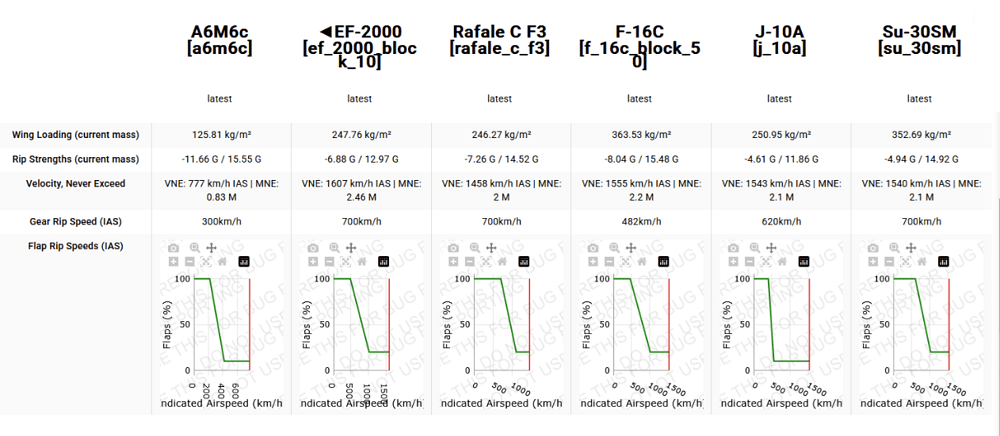Checking on statshark’s data, unsurprisingly, all planes in game are very buffed in terms of G limit that they can take. There’s one oddity though, the zero airframe is extremely resistant to G force and has very high G rip limit.
The A6M6c in particular, is extremely resistant to negative G, compared to other zeros and even modern day fighters.
Against superprop fighters (some never served)
Against zero variants
In fact, only the Fw 190 A series come close to Zero’s 15G positive performance
2 Likes
With mediocre and inferior+weak fabric construction they should have much lower g limits, this plane can hardly deal with any stress
3 Likes
same reason it doesnt compress at high speed despite every historical source indicating that it does
12 Likes
It used to be ripped above 9G back in 2015, and everybody just crashed immediately with a single pull-out in the A6M. So they made it 15G later.
Historically on paper, the early A6M2 was restricted to 5G and later allowed 7G in combat and 6.6G while doing a dive pull-out. The IJN was said to utilize the safety factor of 1.8 instead of standard 1.5. On paper, the Zero would have an ultimate load factor of 12.6G.
However, in reality, an A6M2 saw ripping apart both wings during a simple pull-out after having attacked an SBD bomber during the battle of the Coral Sea. Considering that the A6M has an excessive stick force of 15-25lbs/G, the pilot must be executing manoeuvres less than 9G. This indicates that A6M may fail the structure well before 12.6G. Some said during the high-speed dive, that the A6M is better to have a load factor less than 3G.
5 Likes
Same thing for the Yaks. Their G-resistance is ridiculous along with their near-UFO flight models.
Cute flag abuse, btw.
6 Likes
That’s universal across most props.
Very old flight models which are most likely pure lies.
2 Likes
The Zeros are all-metal, only the control surfaces are fabric and this was the case for many aircraft.
This is probably just an oversight, and negative Gs aren’t really relevant.
13 Likes
They still had very weak construction. Didn’t one get taken out by a BAR?
Resistance to damage and structural strength are very, very different things.
10 Likes
Because its “ZERO” G obviously.
pretty sure someone lost a heli to an arrow in the amazon (think it was civilian though) and F-22 raptors had a min operational alt of 10,000ft in Iraq and Afghanistan because they where worried a single AK bullet would drop them from the sky.
that’s not to say any of those are bad air frames… just that it doesn’t take much to destroy something if you hit it in the right spot.
4 Likes
its a relatively slow aircraft
no, zeros were know to compress more than other props at the time, and yet in game they dont compress at all
As I said, this is a factor with most props in War Thunder.
There are very few props that compress as they should. Corsairs and F8Fs are coincidentally among those few that compress correctly.
1 Like
Don’t they go hand in hand. I mean an A-10 is structurally pretty solid right? And it can take a hit
kinda it should but in game it kinda just gets shredded because of how damage works
Woah, who could’ve guessed that a plane entirely made around turn fighting would be good at turn fighting, unbelievable thought.
Also literally just looking at that wing loading will tell you why it can turn so hard without ripping., also the total weight. The A6Ms are putting less stress on their wings at 15Gs then those others are putting at 10, lmfao.
9 Likes
No. The Hellcat and Corsair were very solid, but the ‘manual limit’ was 7G, imposed by the Navy.
The Zero was designed for ~6G (numbers vary, I have seen that claim be made for being w/ drop tank and 7G without), with a 2x safety factor instead of the normal 1.5x you usually see - ex. P-51D with 8/12 G respectively.
WW2 pilots were generally limited to 6G anyway without a G-suit, very few exceeded that.
Obviously if you put more weight on it, that number will go down. This is true for any plane, using the P-51D as an example again, at max takeoff weight those dropped to 5.5G safe and 7.7G ultimate load factors.
Speaking of the P-51s, the B models had issues when pulling out of a dive at high speed, high-G, and rolling. This pretty much caused the tail to implode due to asymmetric forces and was later fixed.
3 Likes


